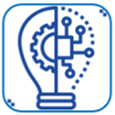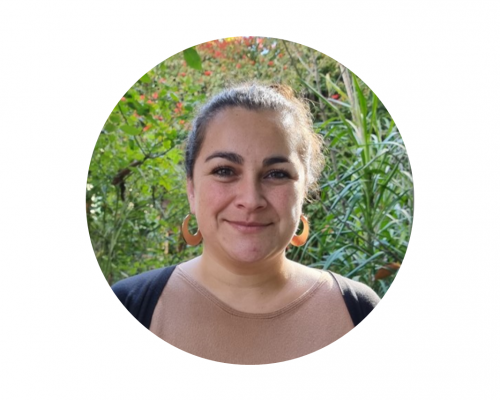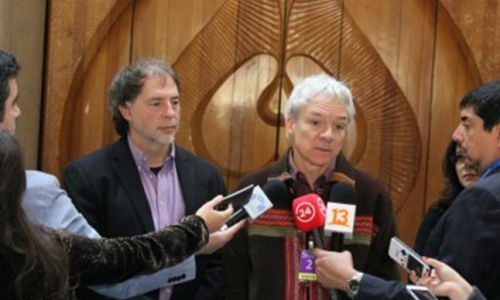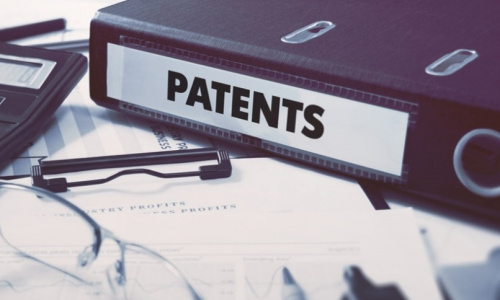The Technology Transfer Unit of the Centro Interdisciplinario de Neurociencias de Valparaíso (UTT-CINV) is in charge of detecting integration opportunities between the research carried out at the CINV and the public and private sectors, generating and transferring knowledge to positively impact society.
This unit is responsible for managing the R&D projects carried out at the CINV, as well as for the intellectual property and technology transfer of research results.
Objectives

Develop and strengthen applied research with an emphasis on the development and innovation of processes, services and products.
 Articulate the link between the Research Teams with public or private institutions, to carry out Research, Development and Innovation (R + D + i) and Technology Transfer activities.
Articulate the link between the Research Teams with public or private institutions, to carry out Research, Development and Innovation (R + D + i) and Technology Transfer activities.
 Promote the integration of teams for the joint search for solutions to specific problems, generating the development of innovative and creative solutions.
Promote the integration of teams for the joint search for solutions to specific problems, generating the development of innovative and creative solutions.

Links with different institutions in order to promote (R + D + i) activities, managing the capture of resources for the financing of projects.
 Identify knowledge assets among the research carried out at the CINV, so that they can be transferable.
Identify knowledge assets among the research carried out at the CINV, so that they can be transferable.
Research & Development projects
As an R&D Center registered in CORFO, we have the technological capabilities to carry out R&D services aimed at delivering tools to the national and international biotechnology industry, for the development of products and services with a scientific basis and positive impact on the society. We are authorized to enter into R&D Contracts with taxpayers who want to access the tax benefits of Law No. 20,570 on Incentive to R&D, which allows a reduction of the first category tax, up to 52.55% of the resources intended for research and development activities.
More info about the law in the following link
Contact
If you want to know more about how we can collaborate, please contact to:
Technology Transfer Coordinator
+5695789 8898
CONNECTOMICA
Connectómica, a company in which the CINV has a stake, is co-founded by researchers Juan Carlos Sáez and Tomás Pérez-Acle. It was born from the research carried out by the first of them on hemichannels, and his work is focused on the development of drugs for the control of the inflammatory response using the human connexin hemichannel as a target.
The company has already developed a new drug to treat muscular dystrophy. The molecule created for this purpose is already being applied in preclinical epilepsy models with encouraging results. He has raised funding to complete preclinical studies and is requesting funding to carry out clinical trials in the United States, jointly filing with the United States Patent and Trademark Office (USPTO) the patent application called “SELECTIVE CONNEXIN HEMICHANNEL BLOCKERS AS THERAPEUTIC COMPOUNDS AND METHODS FOR TREATING INFLAMMATORY DISEASES “marking an important milestone for the internationalization of its results.
Founding team:
Tomás Pérez-Acle, Juan Carlos Sáez, Carlos Lagos
Website: http://www.connectomica.com
Contact:
contact@connectomica.com
Neuromuscular diseases
Dr. Juan Carlos Sáez has discovered important properties of boldine, a molecule derived from boldo, a native tree of Chile, which have allowed the identification of important therapeutic effects in the muscles of people with disabling neuromuscular diseases, which can be fatal at an early age such as diseases Duchenne, Becker or Dysferlinopathies.
These diseases currently have no known effective treatments, and these discoveries offer new therapeutic options that prevent the progressive muscle deterioration that characterizes them.
It is currently in the stages of searching for clinical validations.
Law to regulate the official time in Chile
The CINV has promoted the creation of a law that regulates the official schedule in Chile under scientific criteria. The scientific contribution has been delivered by Dr. John Ewer, for his studies in chronobiology, arguing the benefit that this will bring in the health and learning of school-age children, and the reduction of occupational accidents in adults.
The law has already been approved by the Senate Health Commission and is waiting to be voted on by the full Senate, and may be the first Law in the history of Chile that was born from a scientific research center.
Also read Time change: Why is it necessary to legislate?
Watch the top related interviews HERE
See the status of the bill in the Senate HERE
NODO CIV-VAL
The CINV, together with 7 other institutions from the Coquimbo and Valparaíso Regions, were awarded a project to accelerate the impact of science on society and productive sectors, which seeks to identify and make visible capacities, and synergies between the different actors of the ecosystem of science and technology , in order to generate a greater impact in this area in the central zone of Chile, characterized by having a significant number of universities.
The objective is to create a permanent entity that allows to bring scientific knowledge and the needs of companies closer together, aiming at a sustainable development of the regions, based on knowledge.
Thus, Dr. Andrea Calixto represents the CINV as part of the Macrozonal Coordination Committee, which is the body in charge of advising this initiative and coordinating the different actors in the macrozone, considering aspects such as territorial, thematic and gender representation.
Preclinical studies
We have various in vitro and in vivo models for conducting preclinical studies and validation of biological activity of compounds, especially in neurodegeneration models in animal models such as the nematode C. elegans, zebrafish, or rodents, both healthy and diseased. For this we have personnel and equipment in specialized laboratories that allow us to evaluate the potential health benefits of substances of interest.
Some studies carried out apply to the field of food, pharmacy or veterinary medicine.
Among the functionalities to be evaluated are:
- Assessment of neuronal integrity
- Evaluation of the juvenile appearance-movement of the nematode C. elegans
- Evaluation of antioxidant effect
- Toxicity profile (survival)
- Fertility
Computational biology
The CINV has a super-computing equipment that by means of different computational tools allow the simulation and modeling of biological processes, design of compounds with biological activity, genome studies, design and simulation of macromolecules with nano-biotechnological application and studies in protein structures. on a large scale. To give examples.
Some studies carried out are applied to the field of medicine, genomics, biophysics, among others.
Laboral Security
In view of Dr John Ewer’s experience in studying “biological clocks”, also called circadian clocks, it is proposed to use protocols based on light management to mitigate the negative effects of night work. Today, approximately 20% of the human population performs work outside of daytime hours and there is much evidence that this negatively affects the health of workers who perform work during such hours, such as increased sleep deprivation and fatigue, as well as physical changes mental and behavioral factors of people, associated with the alteration in the daily biological cycle, and that respond mainly to light and darkness in the environment. These alterations also lead to a decrease in productivity and increase the risk of accidents and other long-term consequences if this activity is sustained over time, so it is of great interest to some companies in the productive sector that have workers who they perform sensitive functions such as vehicle drivers and mining and cargo transport workers, to give a few examples. However, our researchers estimate that it is possible to handle this problem in a simple and economical way, which does not imply major changes that interfere with the facilities and activities of some of the productive sectors, focused mainly on the management of lighting in the work environment. of people, as light and dark help the body know when to be awake and work and when to rest.
The scientific and technological capacities of the researchers at our center have allowed them to develop important advances in different productive areas, which have resulted in patent applications and/or patents for invention granted, which are presented below:
Title: SPECIFIC MODULATORS OF CONNEXIN HEMICHANNELS
Publication Number: WO/2015/188288
International application number: PCT / CL2015 / 050012
Inventors: Juan Carlos Sáez; Carlos Lagos
Applicants: PONTIFICIA UNIVERSIDAD CATÓLICA DE CHILE [CL]
Also published as: CL2014001556 / EP3156039 / US20170115276 / CN106659661
Títle: SELECTIVE CONNEXIN HEMICHANNEL BLOCKERS AS THERAPEUTIC COMPOUNDS AND METHODS FOR TREATING INFLAMMATORY DISEASES
Inventors: Gonzalo Nuñez; Juan Carlos Sáez; Carlos Lagos; Tomás Pérez-Acle
Applicants: CONNECTOMICA SPA [CL]













